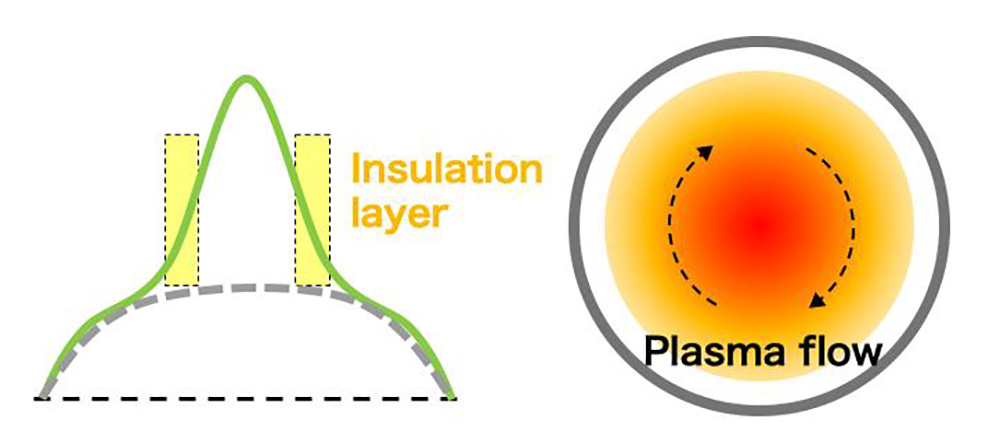Improvement of Plasma Thermal Insulation Layer with Deuterium
─High-speed beam of gold ions reveals plasma flow effects─
In Large Helical Device (LHD) experiments, it has been clarified that the plasma thermal insulation layer was reinforced in plasmas produced by heavier fuel gas. In order to explore the background physics, plasma flow was measured by the so-called heavy ion beam probe (HIBP). It was found that the improvement of the plasma thermal insulation layer in deuterium plasmas clearly correlated with a strong flow structure formation.

In producing plasma, hydrogen or deuterium is generally used as a fuel gas. By simple scaling theory, it is predicted that plasma thermal insulation is worse in deuterium, which has a heavier mass, than in hydrogen. However, the reality is completely the opposite. This phenomenon is called the hydrogen isotope effect, and is regarded as a long-standing mystery in the fusion plasma physics field. In the LHD, a self-generated plasma confinement structure, the so-called internal transport barrier (ITB), is often produced in a plasma interior. In this study, we explored the impact of plasma fuel gas on the ITB strength and discussed whether the isotope effect appeared in ITB behavior.
In the LHD experiment, the ITB strength was compared between deuterium plasmas and hydrogen ones. Generally, the ITB was formed when the plasma density was low. As a result of the experiments, the ITB was formed even in higher density in deuterium. In order to study the background physics of this observation, plasma flow was measured by a diagnostic system, the heavy ion beam probe (HIBP). In this system, high energy gold ions were injected into plasma to pick up the flow information of the plasma interior. As a result, a stronger flow was formed in deuterium plasmas when the ITB emerged, which was considered to assist an easier emergence of the ITB in deuterium. The reason why the strong flow was formed in deuterium will be assessed in theoretical and numerical approaches in future.
The results reported here were published in Scientific Reports, an open access, multidisciplinary journal, on April 1, 2022.
